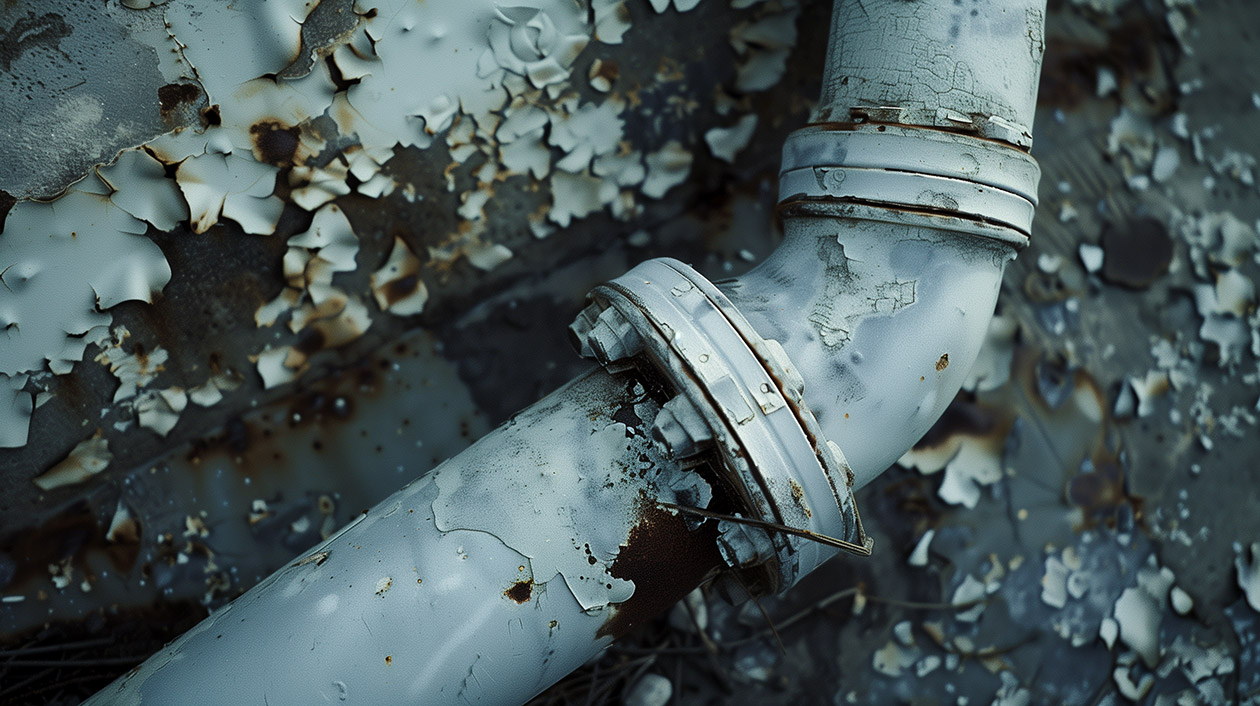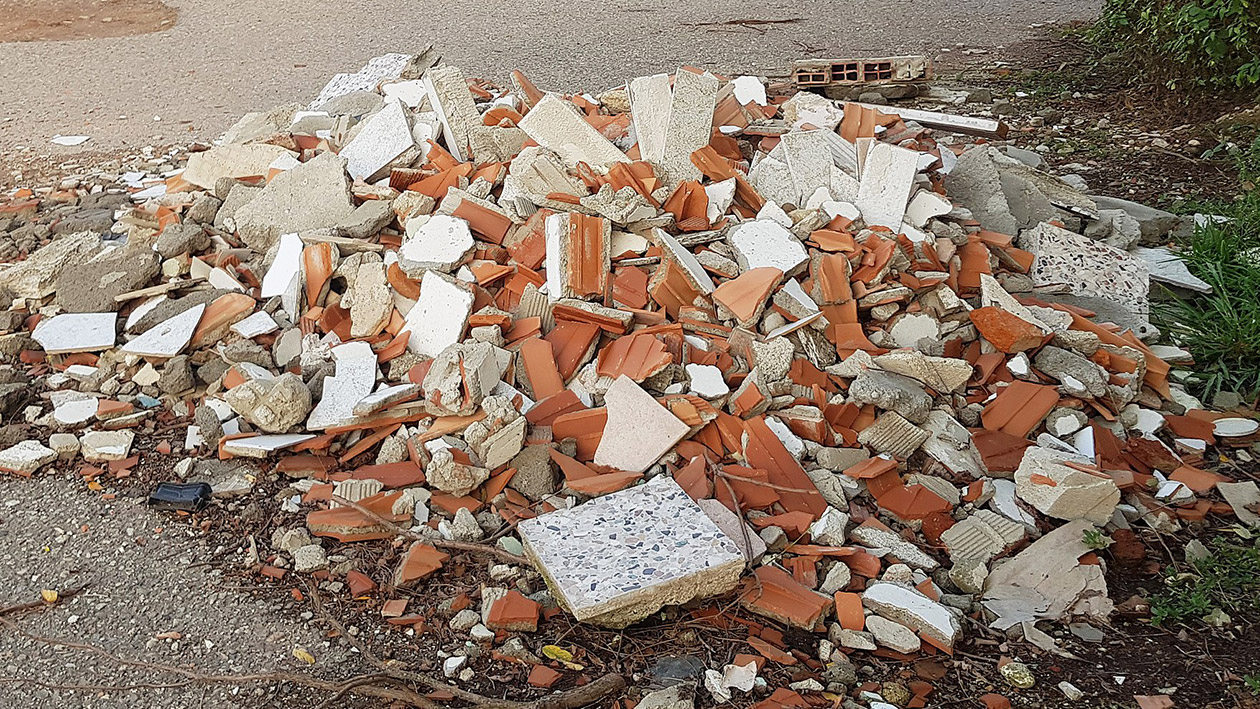Discovering a blocked drain can be frustrating, but understanding the causes and solutions can save you time, money, and stress. Read this article because it will equip you with the knowledge to identify, resolve, and prevent blocked drains in your home.

Hair
- Explanation: Hair accumulates and forms tangled clumps with other debris, obstructing water flow. This is particularly common in bathroom sinks and showers, leading to flooding.
- Signs and Symptoms: Slow draining, gurgling sounds, water pooling around the drain.
- DIY Solutions: Use a drain snake or a bent wire hanger to remove hair clumps. Pour boiling water down the drain to help dissolve soap scum and loosen hair.
- Prevention: Install a drain guard to catch hair before it enters the drain. Regularly clean the drain guard and remove accumulated hair.
- Professional Help: If DIY methods fail or the blockage is deep within the pipes, call a plumber specialising in blocked drain repairs.

Soap Scum
- Explanation: Soap scum forms from the combination of soap residue, minerals from hard water, and dirt. This build-up narrows pipes, restricting water flow. Common in bathrooms and the kitchen.
- Signs and Symptoms: Slow draining, standing water, a white or grey film around the drain.
- DIY Solutions: Regularly pour boiling water down the drain to dissolve soap scum. Use a mixture of baking soda and vinegar to create a fizzing action that helps break down the build-up.
- Prevention: Use liquid soaps instead of bar soaps, as they are less likely to contribute to scum formation. Install a water softener to reduce mineral content in the water.
- Professional Help: If soap scum build-up is severe or DIY methods are ineffective, a plumber can use specialised tools for thorough cleaning

Grease and Fat
- Explanation: Cooking grease and fat solidify in pipes as they cool, creating stubborn blockages that trap other debris.
- Signs and Symptoms: Slow draining, gurgling sounds, unpleasant odours from the drain.
- DIY Solutions: Pour boiling water down the drain to melt solidified grease. Mix baking soda and vinegar to break down grease and deodorize the drain.
- Prevention: Never pour grease down the drain. Instead, let it solidify and dispose of it in the bin. Wipe greasy dishes with a paper towel before washing them.
- Professional Help: For severe grease blockages or recurring issues, a plumber can use high-pressure water jetting or other methods for effective removal.
Dylan Attard, a licensed plumber from True Flow Plumbing and Drains, provides this expert tip: “Never pour cooking grease or oil down the drain, as it solidifies and creates stubborn blockages. Instead, let it cool and solidify, then dispose of it in the bin. Wiping greasy dishes with a paper towel before washing also helps prevent grease buildup.”

Tree Roots
- Explanation: Tree roots seeking moisture can infiltrate and damage pipes, causing blockages, leaks, and pipe collapses.
- Signs and Symptoms: Slow drains, gurgling sounds, sewage backup, lush patches of grass near the sewer line.
- DIY Solutions: Chemical root killers can be used but may have environmental concerns.
- Prevention: Plant trees away from sewer lines. Consider installing root barriers to prevent root intrusion.
- Professional Help: A plumber can assess the extent of root intrusion and recommend solutions like pipe relining, repair, or replacement. They can also use specialized tools to cut and remove roots from the pipes.
Another expert tip from Dylan: “Tree roots are notorious for seeking water sources, and your sewer line is an attractive target. Regularly inspect your property for signs of root intrusion, such as slow outdoor drains, gurgling sounds, or lush patches of grass near sewer lines. Consider preventative measures like root barriers or planting trees safely from your pipes.”

Foreign Objects
- Explanation: Items like toys, jewellery, or hygiene products can accidentally fall into drains, causing immediate blockages.
- Signs and Symptoms: Sudden and complete blockage, gurgling sounds, water backing up in other fixtures.
- DIY Solutions: If the object is visible and reachable, use pliers or a bent wire hanger to retrieve it.
- Prevention: Keep small objects away from drains, use drain guards in sinks and showers, and educate children about not putting things down the drain.
- Professional Help: If the object is lodged deep within the pipes or cannot be retrieved with DIY methods, a plumber can use specialized tools to locate and remove it.

Toiletries
- Explanation: Thick toiletries like wet wipes, cotton balls, and dental floss do not break down easily and can accumulate, causing blockages.
- Signs and Symptoms: Slow flushing toilet, gurgling sounds, overflowing toilet bowl.
- DIY Solutions: A plunger can be used to unblock a toilet or a drain.
- Prevention: Dispose of these items in the bin, not the toilet. Educate household members about proper disposal practices.
- Professional Help: If a plunger doesn’t work or the blockage is deeper in the system, a plumber will have the tools like an Auger to clear the blocked drain

Toilet Paper Buildup
- Explanation: Excessive use of toilet paper can overwhelm the system and lead to blockages, especially in older plumbing or low-flow toilets.
- Signs and Symptoms: Slow flushing toilet, gurgling sounds, overflowing toilet bowl.
- DIY Solutions: Use a plunger to try and dislodge the blockage. Pouring hot water and dish soap into the toilet bowl can help break down the toilet paper.
- Prevention: Use toilet paper in moderation. Consider switching to a more biodegradable option that breaks down easily.
- Professional Help: If the blockage is severe or recurring, a plumber can investigate the cause and provide a solution

Nappies and Sanitary Products
- Explanation: These items are designed to absorb and expand, making them a significant blockage risk.
- Signs and Symptoms: Toilet not flushing, overflowing toilet bowl, gurgling sounds.
- DIY Solutions: A plunger might sometimes help dislodge the blockage.
- Prevention: Always dispose of these items in the bin. Educate household members and guests about proper disposal practices.
- Professional Help: If a plunger doesn’t work, a plumber must remove the blockage and prevent potential damage to the plumbing system.

Mineral Buildup
- Explanation: Hard water deposits minerals (calcium, magnesium) inside pipes, restricting water flow.
- Signs: Slow drains, recurring clogs, reduced water pressure, white deposits around faucets.
- DIY Solutions: Vinegar and baking soda, commercial drain cleaners (use cautiously).
- Prevention: Water softener, regular hot water flushes, preventive vinegar treatments.
- Professional Help: Needed for severe buildup or if DIY methods fail; may require specialised cleaning or pipe replacement.

Damaged or Collapsed Pipes
- Explanation: Pipes can sustain damage or collapse due to ground movement, tree root intrusion, corrosion, or aging infrastructure.
- Signs: Gurgling sounds, multiple blocked drains, slow draining, sewage backups, sinkholes, unusually lush grass patches.
- DIY Solutions: Not recommended; can worsen the problem.
- Prevention: Regular inspections, tree root management, pipe relining.
- Professional Help: Essential for diagnosis and repair (e.g., relining or replacement).

Heavy Rain
- Explanation: Intense rainfall can overwhelm drainage systems, leading to overloaded sewers and stormwater drains. This can cause backups and flooding, particularly in low-lying areas or properties with inadequate drainage.
- Signs: Water pooling around drains, slow drainage during or after heavy rain, gurgling toilets, sewage backups.
- DIY Solutions: Limited effectiveness. Ensure stormwater pits are clear of debris.
- Prevention: Install a backwater prevention valve, improve property drainage, ensure gutters and downpipes are clear and direct water away from the house.
- Professional Help: May be needed for backwater valve installation, drainage system assessment, or addressing sewer system backups. Contact your local council for issues related to public drainage systems.

Hard Water
- Explanation: Hard water contains high levels of dissolved minerals, primarily calcium and magnesium. Over time, these minerals can precipitate and form deposits inside pipes, fixtures, and appliances. These deposits, known as limescale, can restrict water flow and contribute to blockages.
- Signs: Reduced water flow, white or chalky deposits on faucets and fixtures, soap scum buildup, dry skin and hair, increased soap and detergent usage.
- DIY Solutions: Periodically descale faucets and showerheads using vinegar. Install water-softening filters on faucets or showerheads.
- Prevention: Install a whole-house water softener to remove minerals from the water supply. Use a descaling product designed for pipes.
- Professional Help: Consult a plumber for water softener installation or advice on managing hard water issues. They can also assess the extent of limescale buildup and recommend appropriate cleaning or pipe replacement solutions.

Construction Debris
- Explanation: During construction or renovation projects, debris such as cement, grout, plaster, and sawdust can reach drains, causing blockages and obstructing water flow.
- Signs: Slow draining or complete blockage in drains near construction areas, visible debris in drains, unusual sounds from pipes.
- DIY Solutions: Remove visible debris from drains carefully. Use a drain snake or auger for deeper blockages.
- Prevention: Cover drains during construction or renovation work. Regularly clean up debris to prevent it from entering drains.
- Professional Help: For severe blockages or if DIY methods fail, a plumber can use specialised tools to remove construction debris and assess any potential damage to the pipes.
Can Drains Unblock Themselves?
While minor blockages caused by loose debris or grease might eventually clear on their own with enough water flow, it’s generally not a reliable solution to wait for drains to unblock themselves. Here’s why:
- Worsening Blockages: Ignoring a blockage allows debris to accumulate further, potentially leading to a more severe and stubborn clog that requires professional intervention.
- Pipe Damage: The pressure buildup behind a blockage can strain and damage pipes, leading to leaks, bursts, and costly repairs.
- Health Hazards: Blocked drains create stagnant water, which becomes a breeding ground for bacteria, mould, and unpleasant odours. This poses health risks and can worsen allergies or respiratory conditions.
- Inconvenience: A blocked drain disrupts daily routines and can render essential plumbing fixtures unusable.
Therefore, it’s recommended to address blocked drains promptly using appropriate methods, such as DIY techniques for minor clogs or seeking professional help for more complex issues. Addressing the problem early can prevent further complications and ensure the efficient functioning of your plumbing system.
Blocked drains can be a nuisance, but understanding the various causes and solutions can empower you to tackle these issues effectively. From common culprits like hair and grease to less frequent problems like tree root intrusion, being equipped with the knowledge to identify, address, and prevent blockages is key to maintaining a healthy and functional plumbing system.
Remember, early intervention is crucial. Don’t wait for a minor clog to escalate into a major plumbing emergency. By implementing the preventative measures and DIY solutions discussed, you can keep your drains flowing freely and avoid the inconvenience and potential expense of extensive repairs. And when faced with more complex issues, don’t hesitate to seek professional help from a qualified plumber. By taking proactive steps, you can ensure the smooth operation of your plumbing and enjoy a hassle-free experience in your home.



